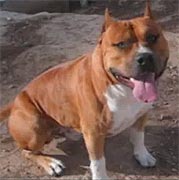
THURSDAY, Nov. 25 (HealthDay News) — Before sharing your Thanksgiving leftovers with your pampered pets, take note: The obesity epidemic in the United States is enlarging cats and dogs, not just their over-fed owners.
Overweight pets are a serious health issue today, experts say. About half of the nation’s companion animals — some 90 million cats and dogs — are tipping the scales, according to the Association for Pet Obesity Prevention.
“As a practicing veterinarian for almost 20 years, I’ve never seen this many overweight pets,” said Dr. Ernie Ward, author of Chow Hounds: Why Our Dogs Are Getting Fatter — A Vet’s Plan to Save Their Lives. “We’re witnessing the super-sizing of America’s pets before our very eyes.”
The cause of obesity in people and pets is the same, added veterinarian Dr. Joe Wakshlag, assistant professor of clinical nutrition at the College of Veterinary Medicine at Cornell University in Ithaca, N.Y.
“The Centers for Disease Control [and Prevention] says that America has become ‘obesogenic,’ meaning that we live in a world that promotes increased food intake, unhealthy food choices and reduced physical activity,” he said. “Our pets live in the same world and are suffering the same consequences of obesity.”
Like their owners, portly pets are at risk for developing diseases such as arthritis, diabetes, kidney and heart disease, high blood pressure and many forms of cancer.
The result: high medical bills. In 2009, the Veterinary Pet Insurance Co. said its policyholders filed more than $17 million in claims for conditions and diseases that can be caused by excess weight.
Making matters worse is the normalization of excess weight. Ward calls it the “fat gap” — where pet owners view an overweight or obese pet as normal.
If a thick layer of fat prevents you from easily feeling your pet’s ribs, your dog or cat is too heavy.
Cutting out high-calorie treats — especially those filled with fat and sugar — is an easy first step to help a pet shed excess weight. If you must give a snack, opt for healthy, low-calorie alternatives such as baby carrots, broccoli, and celery for dogs; salmon or tuna flakes for cats.
“If I could wave a magic wand, I would eliminate all of the unhealthy treats for pets and people,” said Ward. “This single act would greatly reduce obesity rates and decrease many chronic debilitating diseases.”
Keeping pets trim also requires regular exercise, said Ward, who practices veterinary medicine in Calabash, N.C. In general, he recommends that dogs get at least 20 to 30 minutes of sustained aerobic activity each day. That can be achieved by a brisk one to three mile walk or, depending on where you live, going to a dog park, agility course, or even heated swimming pool for pooches. Businesses geared toward keeping dogs fit are found in many major U.S. cities.
For cats, as little as five to 15 minutes of play — chasing a laser beam, feather toy or crumpled ball of paper — is all they need each day, he said.
Keeping pets at a healthy weight also requires knowing how much to feed them. But the amounts suggested on food packages are formulated for active, unaltered adult dogs and cats, said Ward.
“That means if you have an older, spayed or neutered indoor lap potato, you’ll probably be feeding 20 to 30 percent too much if you follow the food’s instructions,” he said.
Instructions on diet pet foods aren’t much better. Researchers at Tufts University’s Cummings School of Veterinary Medicine recently examined nearly 100 foods claiming to aid weight management and found that most would actually cause weight gain if owners followed the label’s feeding directions.
“As this study shows, packaging might not always be a reliable source of information,” said veterinarian Dr. Lisa Freeman, study co-author and professor of nutrition at Tufts University.
Efforts are under way to require manufacturers to include calories on all pet food packaging in coming years, but Wakshlag said listing the calorie content won’t help pet owners much.
“There’s really no way, based on how the label is structured now, to accurately give the calories,” he said. Unless a company has done a pricey and lengthy digestibility study of their food, “they really don’t know how many calories are in a can,” he said.
Pets don’t need many calories to maintain a healthy weight. Ward said an adult 10-pound, indoor, spayed cat only needs 180 to 200 calories per day while an older 20-pound, neutered dog needs 340 to 380.
To figure out your pet’s daily caloric needs, Ward suggests this formula as a starting point: Divide your pet’s weight by 2.2. Multiply this figure by 30, then add 70, and you’ll have an idea of how many calories to feed a typical, inactive spayed or neutered pet.
“Of course, each pet’s metabolism is different, so be sure to consult your veterinarian before starting a diet,” he said.
More information
There’s more on helping your pet stay healthy at the U.S. National Library of Medicine.

